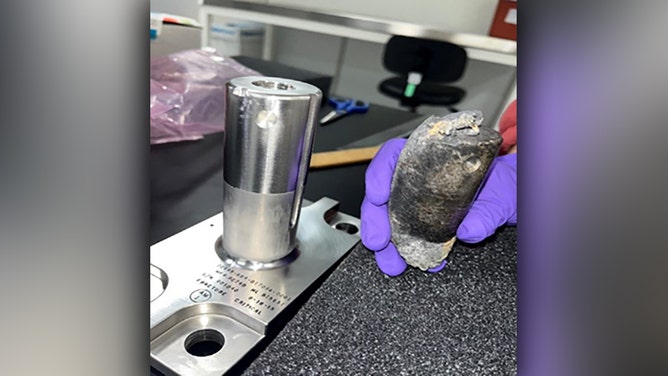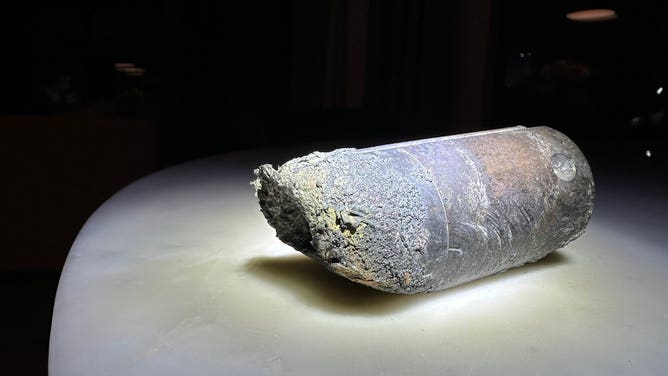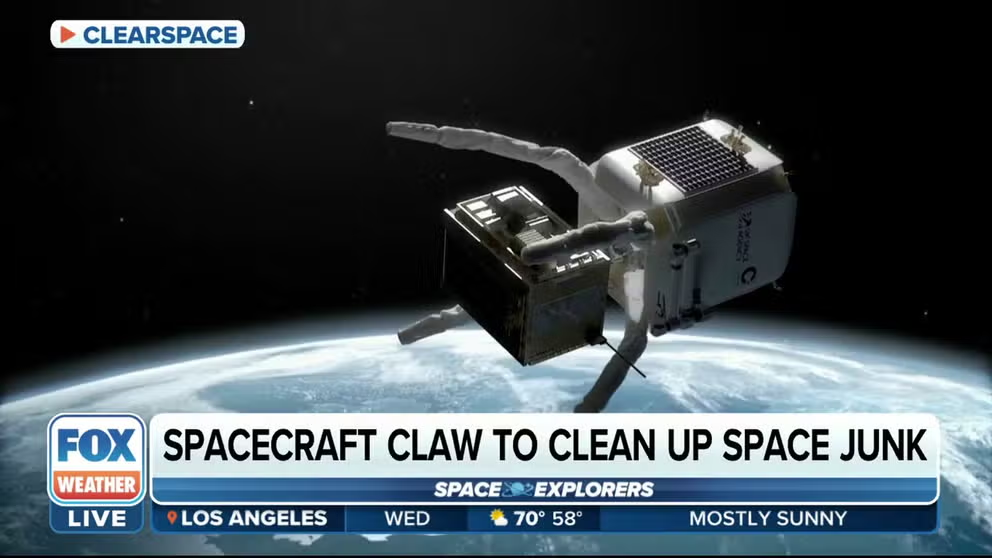NASA identifies mystery object that crashed through Florida man's home
After conducting an analysis, NASA determined that the debris found was a stanchion from their flight support equipment. The object is made of Inconel, weighs 1.6 pounds, is 4 inches in height and 1.6 inches in diameter.
FILE – The claw: Plucking space junk
Scientists designed a spacecraft claw to pluck space junk like broken satellites and jettisoned rockets from the solar system.
NAPLES, Fla. – A piece of space hardware, which had crashed through the roof of a Florida man's home last month, was part of the International Space Station, NASA officials confirmed.
NASA said astronauts released some aging nickel hydride batteries from the ISS using its robotic arm in March 2021. The batteries were replaced with new lithium-ion batteries as part of power upgrades on the orbital outpost. The hardware weighed about 5,800 pounds.
NASA expected the hardware to burn up in the Earth's atmosphere on March 8, 2024. However, a piece of hardware survived and fell on a house in Naples, Florida. NASA worked with the homeowner to collect and analyze the item at the agency's Kennedy Space Center.
SCHOOL BUS-SIZED SATELLITE CRASHES INTO EARTH'S ATMOSPHERE OVER NORTH PACIFIC OCEAN

Recovered stanchion from the NASA flight support equipment used to mount International Space Station batteries on a cargo pallet. The stanchion survived re-entry through Earth’s atmosphere on March 8, 2024, and impacted a home in Naples, Florida.
(NASA)
Homeowner Alejandro Otero wrote to Harvard astronomer Jonathan McDowell on social media after the piece of space debris left a hole in his roof and ceiling before ripping through the second-story floor. McDowell tracks Earth reentries on his website.
On Monday, NASA said they determined that the debris found was a stanchion from their flight support equipment. The object is made of Inconel, weighs 1.6 pounds, is 4 inches in height and 1.6 inches in diameter.

A piece of suspected space debris came crashing down through a Naples, Florida home on March 8, 2024.
(Alejandro Otero / LOCAL NEWS X /TMX)
"The International Space Station will perform a detailed investigation of the jettison and re-entry analysis to determine the cause of the debris survival and to update modeling and analysis, as needed," NASA said.
NASA experts use models to predict how objects will heat up and break apart during re-entry into the atmosphere. These models rely on specific details and are updated when debris is found to have survived re-entry and landed on the ground.
"NASA remains committed to responsibly operating in low Earth orbit, and mitigating as much risk as possible to protect people on Earth when space hardware must be released," the space agency said.
Space parts frequently re-enter Earth's atmosphere, but they rarely cause damage to a home or human.
